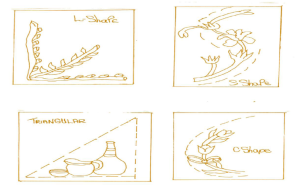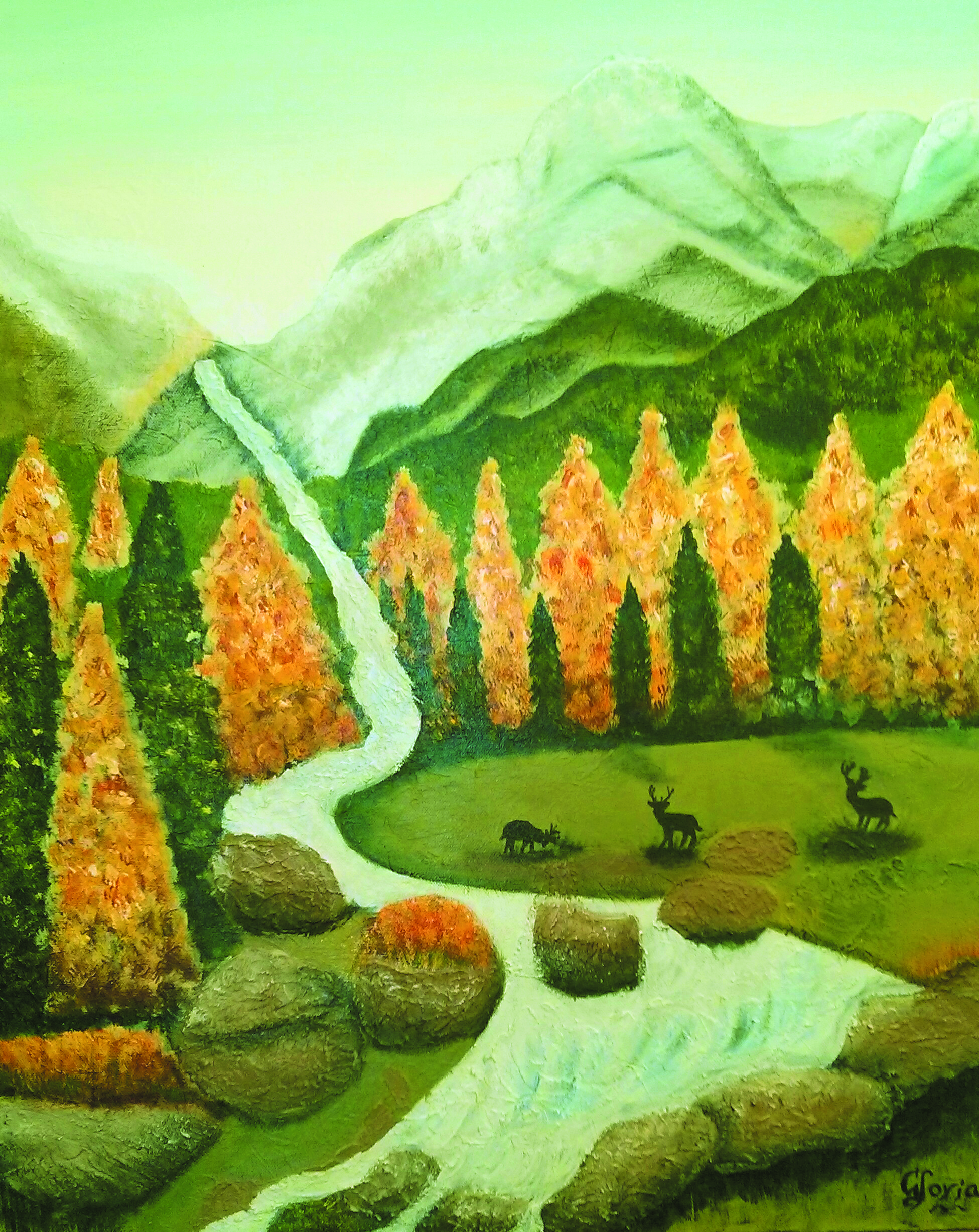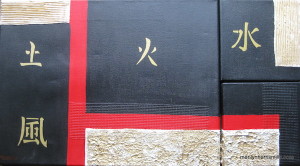~ * ~
This article is written by Marilyn Harris Mills
Here is the third installment in Marilyn’s Good Design and Composition. You can read the first installment here: Good Design and Composition for Mixed Media Art, which covers the elements of a good design. You can read the second installment here: 6 Principles for Composition in Mixed Media Art and here we cover six principles of design.
Finally we look at a few principles of design that I threw into the mix myself: Emotions, Confidence and Remembrance.
Emotions/Moods
So many times I’ll view artwork and think to myself…well gee, I could have come up with that idea! What is it about a certain piece that evokes an emotion within us…or creates a type of mood we feel? Peacefulness, tranquility, craziness, loveliness, loneliness, encouragement? Design elements need to contribute to creating a mood or an emotion within the viewer. To do this successfully the elements all need to work together to evoke a certain mood or emotion the artist wishes to convey to the viewer. Think of this principle when viewing art. What do you feel? What is the artist trying to get you to feel?
i.e. Valentine’s Day…love is the mood when you’re creating a greeting card for someone special.
Confidence
Does your artwork speak confidently to the viewer? Are you certain of what you were trying to convey when you were creating? Did you feel wishy-washy with your approach to your painting? Were you confident with the techniques you employed? If you’re not confident while painting, this relational aspect will be noticed and felt by the viewer. Make sure you know the reason behind choosing the subject matter that you used. Make sure you paint with confidence, it will show in your final art piece and the viewer will be appreciative of your artistic art message.
Remembrance
Have you ever looked at a photograph and it was so striking to you that you remembered it days later? This would be considered a good piece of art. The photographer has captured his subject well. So too should your art piece….be remembered. Creating an art piece that will be remembered is hard to accomplish….we’re not Da Vinci. We have to “work” at our art, research, learn new techniques so that we can create our own style.
A style that will be captured in each of your paintings so that your art will be remembered. Think of visitors to your home…they will remember the way you decorated if you’ve chosen to emphasize a certain theme using a particular colour palette with complementary drapery, accessories etc. Be different than other artists. Create in your own unique style…then both you and your artwork will be remembered.
A successful art work will encompass all of these elements and principles of design. Don’t expect to get it right the first time. Trial and error. I have more canvases sitting in the “oh…that didn’t work” bin than I do canvases that did work. I have kept every yucky canvas…it helps me to remember what I did wrong and what I still need to learn. Any art journey is all about learning, creating, adjusting and first and foremost applying the principles of design.
Some artists tend to paint on a flat surface whereas other artists may paint on a variety of three dimensional surfaces. No matter the surface, composition refers to the overall arrangement of all the parts of the design, the six elements. How do we put these various elements together to create a good composition within the painting?
Composition
Now, let’s talk about composition briefly here. Composition refers to the arrangement of all the elements of a design. You can arrange the pieces in a few different ways. First though, you must choose a focal point….a point of interest or what I like to refer to as the “meat” of the painting….what is the most important part? Oh and the centre of interest is not in the centre of the painting….its slightly off-centre.
To help create a centre of interest, artists use The Golden Mean, a mathematical formula used by the Greeks and Romans to determine the most pleasing aesthetic proportions. To find the Golden Mean, divide your substrate into thirds vertically and again horizontally to make nine equal parts. The four center points at which the lines intersect are considered the best locations to place the focal point of your painting thus ensuring a successful composition. I encourage you to search the internet to learn more about the Golden Mean.
Here’s a few classic layouts for good composition dependent on your subject
So that’s about it….the elements and principles of good design and composition. Learn all this first and then you can go about breaking the rules!!!
Stay ARTistically Inspired…
Maer
Read Part One: Good Design & Composition for Mixed Media Art
Read Part Two: Six Principles for Composition in Mixed Media Art
~*~*~*~*~*~*~*~*~*~*~*~*~*~*~*~*~*~*~*~*~*~*~*~*~
Marilyn Harris Mills, aka Maer, is a Published Artist, Teacher and Designer, in Ottawa Canada.
You can read about Marilyn at Maer’s Muses. Her art has been published in “Creating Time: Using Creativity to Reinvent the Clock and Reclaim Your Life”
“I work in whatever medium likes me at the moment”-Mark Chagall
~*~*~*~*~*~*~*~*~*~*~*~*~*~*~*~*~*~*~*~*~*~*~*~*~







Recent Comments